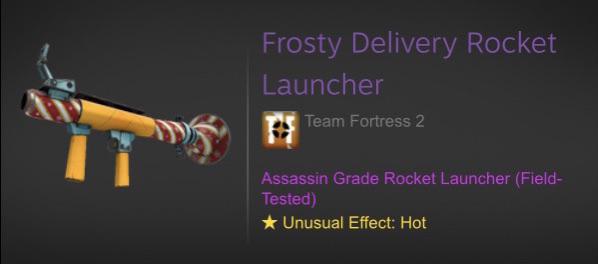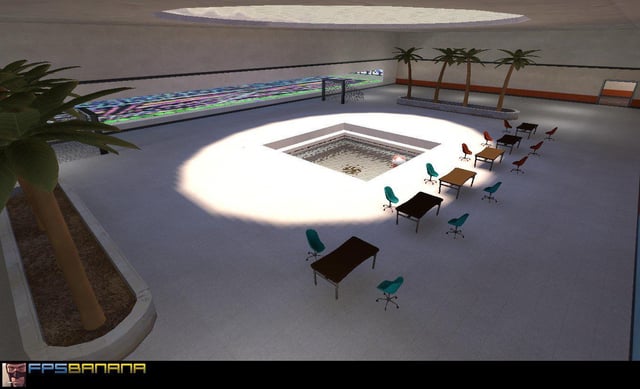Team Fortress 2's Virtual Economy: The Precursor to NFTs?

I’ll never forget it: January 2011. I had been playing Team Fortress 2 for just over a year, religiously checking the forums and wiki for the latest updates. One day, after a particularly grueling match on Dustbowl, I decided to uncrate a Series #19 Mann Co. Supply Crate. Purely for fun, I bought a Mann Co. Supply Crate Key from the in-game store. Lo and behold, out popped a Burning Flames Team Captain – an unusual hat with a fiery particle effect. I nearly choked on my Mountain Dew. Back then, these were like digital gold. Before I even equipped it, I listed it for sale on a trading forum for 30 keys and it was snapped up in minutes! It was a pivotal moment, not just for me, but for the future of player-driven economies in gaming. Team Fortress 2 had just transitioned to free-to-play, introducing item drops and the Mann Co. Store, unknowingly setting the stage for the NFT craze we see today. The Team Fortress 2 economy NFTs are intrinsically linked, and that is something I’m going to dive into within this article.
The Birth of the Mann Co. Store
The introduction of the Mann Co. Store was a watershed moment. Suddenly, Team Fortress 2 wasn't just about capturing control points; it was about collecting, trading, and, yes, even showing off. The initial reaction to crates, especially Series #19, and keys was mixed. Some players saw it as a cynical cash grab by Valve, while others (like myself) recognized the potential for a dynamic virtual economy. Before long, the "hat craze" was in full swing. Cosmetic items, initially intended as mere visual flair, quickly became status symbols. The principles of digital scarcity were in play, even if we didn't call them that back then. Rare items, like unusual hats, commanded exorbitant prices in keys, the in-game currency used to purchase many items. This dynamic inadvertently set the value of TF2 keys today. But how would players connect in order to buy and sell these items? That is where the trading communities came into play.
The Rise of Trading Communities

The desire to acquire the rarest hats and show them off quickly spawned a cottage industry of item trading websites, forums, and dedicated in-game trading servers. Sites like backpack.tf emerged as essential resources, providing price guides and a centralized platform for traders. The mechanics of trading were simple: players would offer items or keys in exchange for other items, negotiating and bartering to reach a mutually agreeable deal. "Middlemen," often reputable members of the community with high SteamRep scores (a reputation tracking system), were used to ensure fair trades, especially for high-value items. The Team Fortress 2 trading community impact on the game cannot be understated.
The trading scene became wildly popular for several reasons:
- Collection: Humans are natural collectors. The allure of owning rare and unique digital items was irresistible.
- Social Interaction: Trading provided a social outlet, fostering friendships and rivalries.
- Profit: Some players saw trading as a way to earn real-world money, flipping items for profit.
I remember one time witnessing a player get scammed out of a duped Max's Severed Head (a very rare item) on a trade server. Duped items were duplicates created through exploits in Steam's early economy. The item was traded for less value because it was easily identified as duped. The duping exploits only made the community more careful when dealing with traders. The TF2 unusuals price history also influenced market prices.
The demand for first-generation unusuals, like my Burning Flames Team Captain, was particularly intense. These items were seen as the "OG" unusuals, with their particle effects considered more visually appealing than later generations. The high prices these hats commanded further fueled the trading frenzy. Many players often ask the question: "How did Team Fortress 2 predict NFTs?". The answer to that lies within the economy of these digital goods.
My Time Running MyTradingSite.tf

Seeing the explosion of the trading scene, I decided to launch my own platform: MyTradingSite.tf. It was a labor of love, built from the ground up to provide a better trading experience for the community. The site featured a robust trade listing system, a forum for discussions, and even automated trading bots. These bots, built using libraries like SteamKit, allowed users to automatically accept or decline trade offers based on pre-defined criteria, streamlining the trading process and allowing users to be online even when they weren't. The TF2 item trading websites legacy continues to this day through modern platforms.
Running MyTradingSite.tf was incredibly challenging but also immensely rewarding. Managing a large online community required constant moderation and conflict resolution. We had to deal with everything from petty squabbles to serious scams. But seeing the community thrive, witnessing friendships being forged, and helping players find their dream items made it all worthwhile. The value of TF2 keys today is important to understand, but also important to facilitate fair trading, and ensure safety when operating a trading website.
One significant challenge was dealing with chargebacks from fraudulent purchases. Some users would buy keys with stolen credit cards and then attempt to trade them for valuable items before the chargeback went through. We had to implement strict verification procedures to prevent this type of fraud. Legal and ethical considerations were always at the forefront of our minds.
The Legacy

Looking back, it's clear that Team Fortress 2's in-game economy was a pioneering experiment that paved the way for modern NFT games and the broader concept of digital asset ownership. Team Fortress 2 demonstrated the power of player-driven economies to enhance engagement and retention. By allowing players to own, trade, and monetize virtual items, Valve created a deeply immersive and rewarding experience. Consider, how did this happen? The TF2 economy precursor to play to earn models happened due to the long-term player investment in the economy.
This model has influenced early experiments in play-to-earn gaming, such as Axie Infinity. Although these models are still very different from Team Fortress 2's free-to-play model, the core principles of digital asset ownership and player-driven value are the same. These concepts continue to shape the gaming landscape.
Here is why the legacy of TF2 is important:
- Sets a precedent for NFT gaming by creating an in-game economy.
- Establishes the first widespread adoption of digital scarcity.
- Lays the foundation for modern games to provide play-to-earn value.
Conclusion

Team Fortress 2 had a profound impact on PC gaming, demonstrating the potential of virtual economies to create thriving and engaging communities. From the Mann Co. Store to the bustling trading servers, Team Fortress 2 showed the world what it's like to truly own digital assets. The Team Fortress 2 economy NFTs influence continues in the modern gaming landscape. As we move towards the metaverse, with its promises of interoperable digital worlds and seamless asset ownership, one question remains: Will NFT gaming become the new standard, or will it remain a niche phenomenon? Only time will tell.